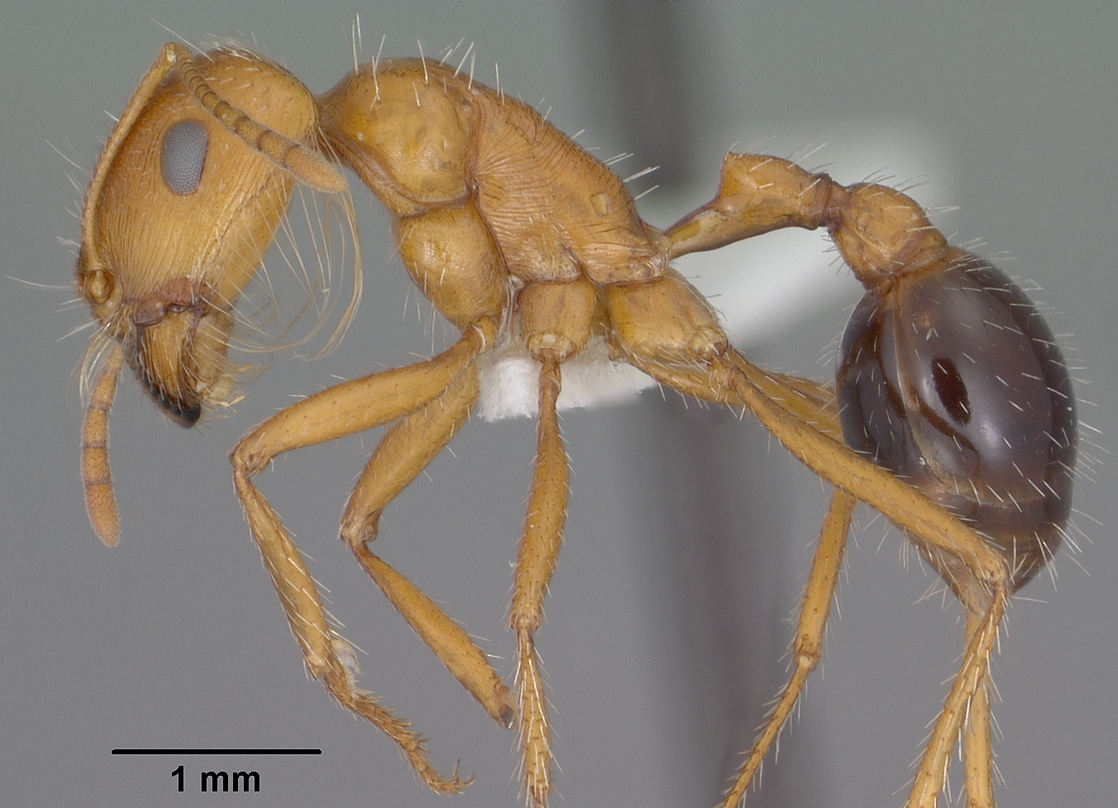Facts
 Besides
the information provided on the other pages of this website,
there are quite a few interesting facts about the California
harvester ant waiting to be discovered. We selected eight pieces
of information and displayed them below.
Besides
the information provided on the other pages of this website,
there are quite a few interesting facts about the California
harvester ant waiting to be discovered. We selected eight pieces
of information and displayed them below.
- The
mandibles of Pogonomyrmex californicus are
used to cut down grass and plant stems from the nest area,
remove seeds from plants and take them back to the nest,
hold food during consumption, remove soil during nest
excavation and repair, and move eggs and larvae within the
nest, just to name a few (Pogolumina 2010).
- The California harvester ant's venom is more effective in
vertebrates than other insects probably because it evolved
as a defense against such mammals as rodents (Pogolumina
2010).
- Dry-sand-carrying abilities are increased by up to 200
percent as a result of the presence of the
psammophore
(Pogolumina 2010).
- Other desert ants also have psammophores, including
species of Messor, Pheridole, and Mymecosystus (Pogolumina 2010).
- P. californicus is a member of the subfamily
Myrmicinae, which indicates that worker ants have distinct
postpetioles (abdominal segment IV is much larger than
abdominal segment III) (AntWeb 2014).
- The average foraging distance of this organism is three to five meters
from the nest, or about 10 feet to 16.5 feet (Navajo Nature
2010).
- The average length of a California harvester ant worker
is approximately 0.25 inch (Navajo Nature 2010).
- Cephalic and thoracic rugae (ridges) have shining
interspaces in P. californicus (Navajo Nature 2010).
As you can certainly see, P. californicus is a
fascinating organism! From having relatives that share
characteristics such as psammophores and distinct postpetioles
in workers to having extremely powerful venom, the California
harvester ant was chosen by us for a reason. We hope that you
will find the wonders of this organism as captivating as we did.
Go back to the Interactions page Go to the Home page Go on to the References page